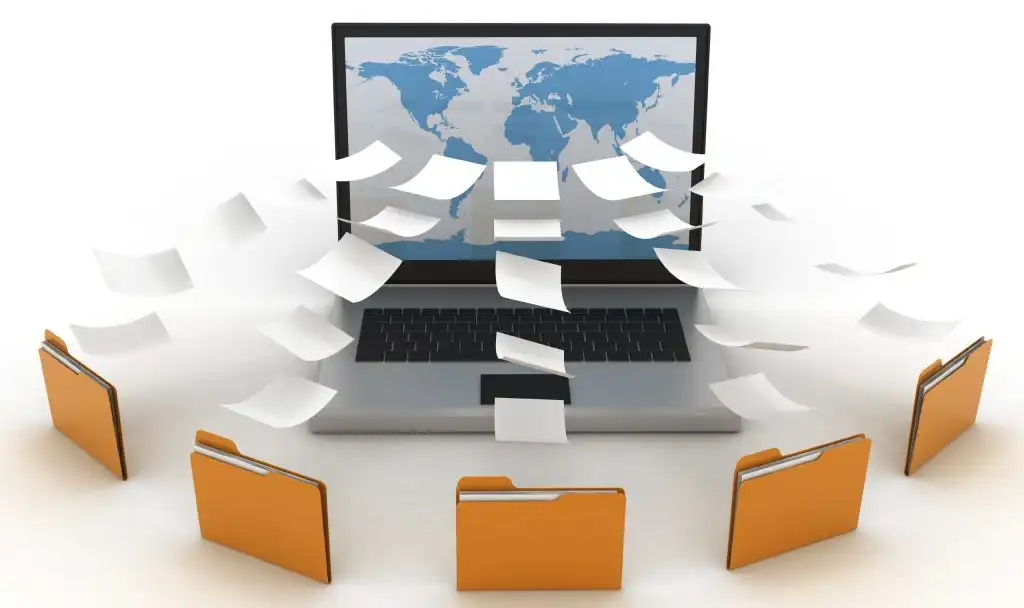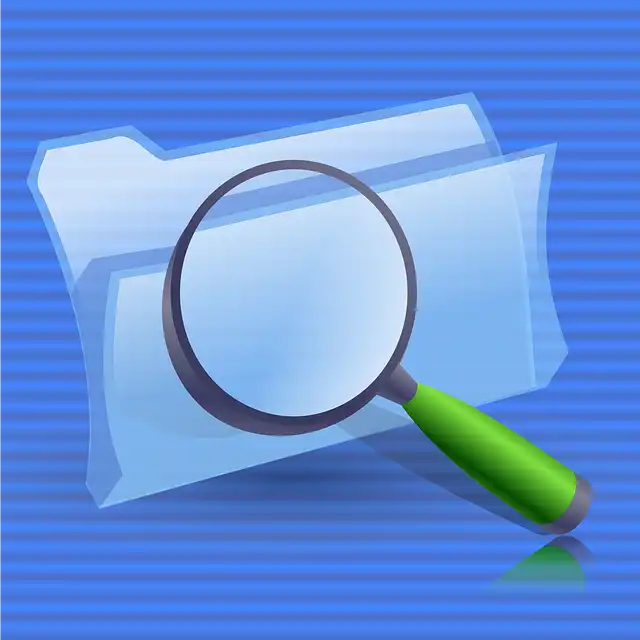Accounts payable is particularly a document-heavy department. Whether you're dealing with vendors or upper management, there are usually tons of documents to process and approve, like vendor invoices, reports, purchase orders, and so on.
To work efficiently, you need to be able to manage these documents well. Otherwise you'll be faced with a business process that holds you back instead of propelling you forward.
Manual document management is outdated.

Some businesses depend on a paper-based document management system. But there are a number of disadvantages associated with using a document management system (DMS) like this.
- It’s prone to damage and loss.
- There's limited storage, as paperwork takes up physical space.
- It’s not easy enough to move files around.
- Manual document management is costly.
- You can't easily track and monitor your documents.
- It makes collaboration awkward.
- It is not environmentally friendly.
If your accounts payable department relies on traditional systems for managing documents, it means you are operating in an outdated fashion impeding your business processes. It’s time for an upgrade.
But how exactly do you do that? Which steps can you take to effectively manage your documents and optimize your business process?
This is where electronic document management system (EDMS) comes in.
What is an electronic document management system?

An electronic document management system digitally stores, organizes, and manages your documents and images of paper-based information. Consider it your digital filing cabinet that provides a framework for organizing your documents — it's online, it’s a lot more innovative, it’s easier to run, and it’s less expensive. With EDMS software, you can more easily track and control documents and determine who has access to them.
However, documents need to be managed along with workflows in order for employees to process them. To do this, you need a workflow automation tool with a built-in document management module, or one that can seamlessly integrate with your choice of document management system.
Integrating document management with a workflow management system (WfMS)

Without a workflow solution, documents are usually sent as email attachments. The drawback here is that you can lose track of communication and your documents are likely to be forgotten (or ignored outright) in a receipient’s inbox, bustling with endless emails.
It’s better to use a workflow automation tool that supports document processing. This way, you can easily manage documents together with business processes throughout your organization.
Do you want the procurement department to confirm the numbers in an invoice? Just start a process already with the document attached. This gets your documents to their designated recipients more quickly, and gets them approved in a more timely manner.
Furthermore, you'd be able to create a rule that controls the document’s flow. Let's say you want an invoice to be automatically routed back to the AP department after it's been approved by the purchasing department — you can do that easily in a workflow tool. And by reviewing your history of comments, users will be able to know what actions are required on a particular document to complete the process. This makes it easy to track files, create new steps for approval, change routing rules, and even receive updates on documents.
Here are some of the things you can do with workflow automation software that can’t be achieved with paper- or email-based methods for processing documents:
- Relevant changes: You can make applicable changes to a document as the process changes. For example, if a document needs changing, you can easily do so and even track changes made by others. This prevents issues like incorrect payments.
- Quicker completion of tasks: Workflow automation lets you complete tasks more quickly as a result of documents getting approved on time, boosting your productivity.
- Optimized business communication: With a workflow tool that supports document processing, you won't have to depend on in-person communication or even email. You can easily send out workflow requests with relevant documents and comments attached. And if questions arise during approval steps, participants can communicate effortlessly within the process.
- Mobile availability: Approving documents on the go sounds pretty nice, no? It not only moves work forward, but also makes it possible to complete tasks more quickly. Just get a workflow automation tool that is accessible via smartphone and tablet.
- Better working conditions: Your AP team members will see requests in their workflow automation inbox folder and will act more quickly instead of wasting time reading long emails, downloading attached documents, and switching platforms just to find documents to attach to their reply.
- Invoice data extraction: With workflow automation, you can easily capture or extract invoice data using OCR technology.
- Document repository: A workflow automation tool serves as a repository. You'll be able to store, access, and retrieve your documents anytime.
- Searchability: Documents can be searched using various attributes, like vendor name. Being able to easily search through a company's documents is a huge benefit: you find exactly what you’re looking for.
- Better collaboration: Multiple users can collaborate and work together on the same documents using workflow technology.
- Cloud storage: Workflow automation tools store documents in the cloud. This prevents loss and damages, and gives you access to documents from any location that has an Internet connection. The software provider, for no additional cost, handles all of the software upgrades and maintenance. You don't need physical space. You don't even have to worry about backing up, as the tool will automatically save your documents.
- Instant access: With your documents stored in the cloud, you can instantly access them from any place and from any relevant device with just a few clicks. You won't have to wait until you get to the office in order to access them.
- Security: Workflow automation offers increased security. You can easily track who is viewing and editing your document, and designate which employees have access to which files.
- Space-saving: Ditching paper document management for EDMS can save a tremendous amount of physical storage space.
- Integration: Workflow automation software readily integrates with the programs you already use, like your ERP system, for seamless processing of documents.
Now that you know the importance of workflow automation to document management, use the following tips to optimize your processes.
1. Start the process correctly.
It's good to start every invoice approval right by encouraging your suppliers to only submit e-invoices. When they do this, it'll be easy to process the documents without additional steps like scanning and data capture.
2. Capture original invoices.
If a document requires capturing, make sure you do so from the original invoice. This increases efficiency and improves data quality.
The reason for this is that changes may be affected in a document along the process. You need the original details to be able to pay correctly.
3. Restrict access to sensitive documents.

Not all documents are the same. For documents containing personally identifiable information, you might want to control who has access to them.
You can do this using two-factor authentication and password protection. If possible, track who views them and set notifications for alerting you of changes to the documents.
4. Convert every paper document into digital files.
If you have large quantities of paper documents, you might want to to turn them into digital files for easy storage and maintenance.
5. Manage your documents’ life cycles.
The industry standard for keeping accounting documents is around seven years. You should be able to know where documents are in their life cycles, and know whether they are active, archived, or ready for disposal.
6. Make documents easily searchable.
You can do this by adding tags and other metadata to them. By tagging documents, they can be rapidly searched and retrieved, reducing the time employees spend looking for information, increasing productivity.

Without documents, your accounts payable department will probably find it difficult to perform its functions — you need them in order to operate. However, you also need a tool for processing documents effectively.
Manual document management impedes progress and productivity. It's always better to manage your documents electronically. This makes it easy to integrate them into workflows, collaborate with your colleagues, and streamline your business processes.
Pyrus is an expert accounts payable workflow automation tool with a robust document management system that unites all of these features. You can easily route any document you want, get it approved, and do even more still.
Enter your details below to learn more about the Pyrus accounts payable tool and find out how it can help you manage your documents successfully. It's free for teams of any size.
Request a demo of the Pyrus accounts payable solution